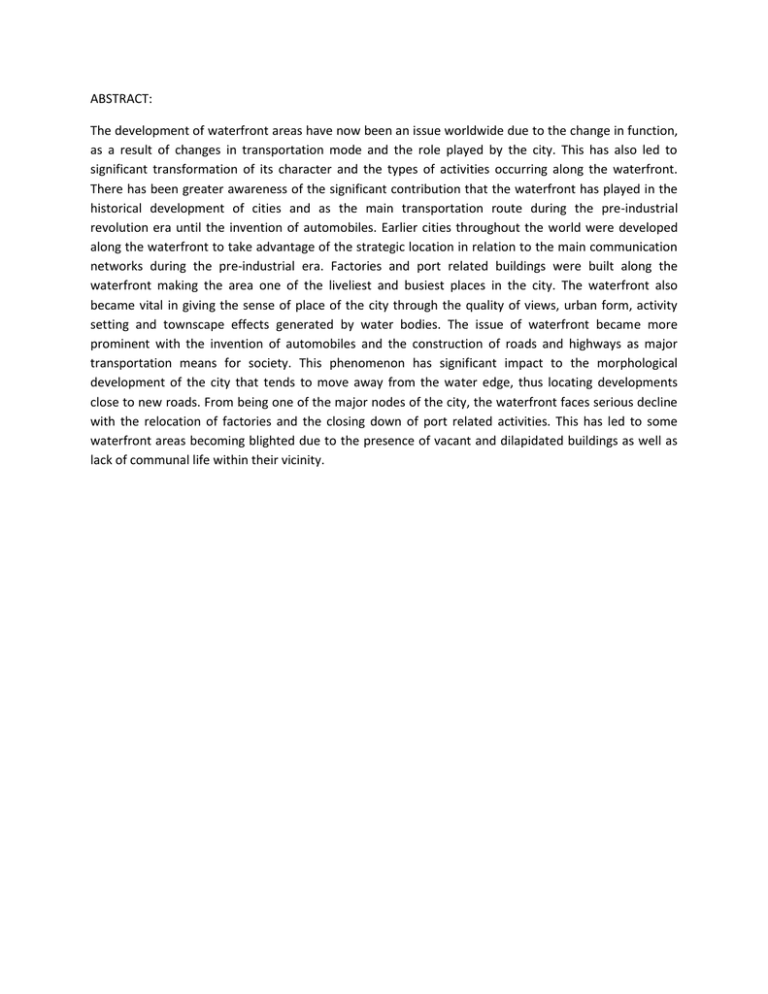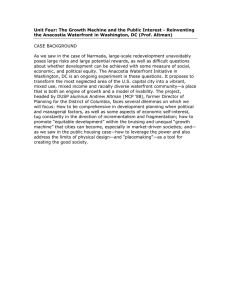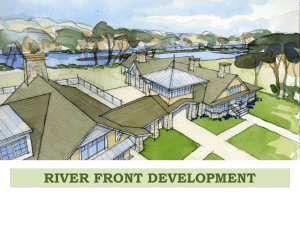ABSTRACT: The development of waterfront areas have now been an issue...
advertisement

ABSTRACT: The development of waterfront areas have now been an issue worldwide due to the change in function, as a result of changes in transportation mode and the role played by the city. This has also led to significant transformation of its character and the types of activities occurring along the waterfront. There has been greater awareness of the significant contribution that the waterfront has played in the historical development of cities and as the main transportation route during the pre-industrial revolution era until the invention of automobiles. Earlier cities throughout the world were developed along the waterfront to take advantage of the strategic location in relation to the main communication networks during the pre-industrial era. Factories and port related buildings were built along the waterfront making the area one of the liveliest and busiest places in the city. The waterfront also became vital in giving the sense of place of the city through the quality of views, urban form, activity setting and townscape effects generated by water bodies. The issue of waterfront became more prominent with the invention of automobiles and the construction of roads and highways as major transportation means for society. This phenomenon has significant impact to the morphological development of the city that tends to move away from the water edge, thus locating developments close to new roads. From being one of the major nodes of the city, the waterfront faces serious decline with the relocation of factories and the closing down of port related activities. This has led to some waterfront areas becoming blighted due to the presence of vacant and dilapidated buildings as well as lack of communal life within their vicinity.











